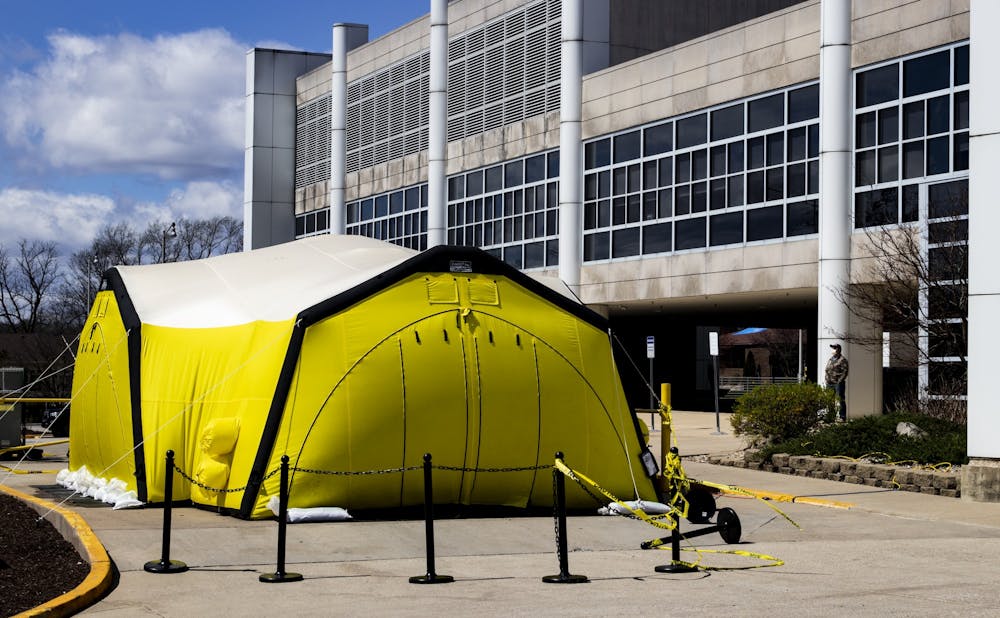Gov. Eric Holcomb signed an executive order Monday detailing state officials' plan for an anticipated spike of COVID-19 cases in Indiana. Based on projection models, Indiana’s surge of cases is expected to begin soon and peak in mid-April or May, according to a press release from the governor’s office.
“We see a surge coming and we’re calling in the reinforcements, bolstering Indiana’s capacity to provide additional health care services during this emergency,” Holcomb said in the release.
To allow regularly licensed medical professionals to be on the frontline of the pandemic, the executive order grants some medical professionals without an active license permission to practice, according to the release. Those who have retired or become inactive in the past five years, who hold licenses in other states, and some medical students and graduates will be allowed to register to continue practicing during the pandemic. They will be able to assist in screenings, telemedicine and other basic procedures.
The Indiana Professional Licensing Agency pushed back the expiration date for licenses set to expire so they will remain valid until May 22, according to the agency's website.
More than 11,000 medical professionals, not including medical students, have volunteered to help health care and hospitals, state health commissioner Dr. Kristina Box said at a Tuesday press conference organized by the governor’s office.
Hospitals in Indiana have already taken steps to increase the number of critical care hospital beds from 1,432 to 1,940, according to the governor’s press release. State officials plan to double the number of beds, if needed, by taking beds from noncritical care, recovery rooms, operating rooms and outpatient facilities.
As of Monday, Indiana has 1,177 ventilators and hospitals have identified another 750 that can be used for critical care patients, according to the release. If needed, officials are prepared to double the number of ventilators by repurposing ventilators from operating rooms, ambulatory care centers, Emergency Medical Services and the Indiana National Guard.
To accommodate the expected surge of patients, the state’s plan calls for moving less critical patients to alternative facilities such as other hospitals, medical clinics and state hospitals, according to the release.
“We have a long way to go until the peak, which is why it is so important for everyone to remain at home,” Box said at the press conference.




